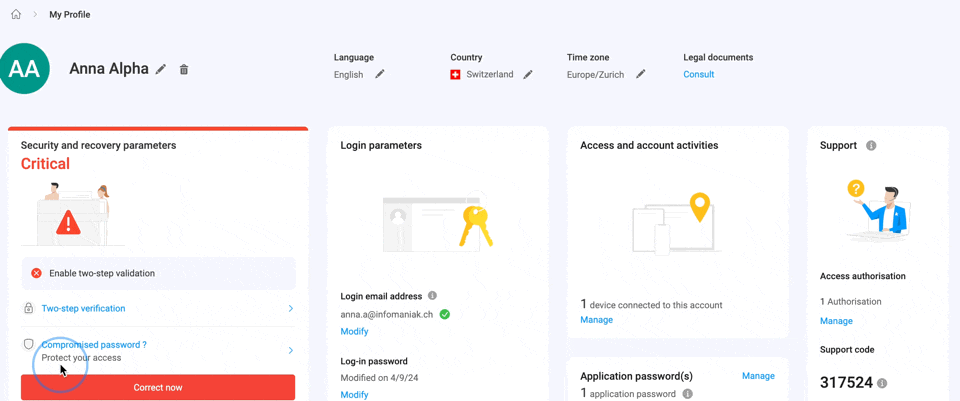1000 FAQs, 500 tutorials and explanatory videos. Here, there are only solutions!
Enable two-step verification (2FA)
This guide explains how to enable two-factor authentication, also known as two-step verification or multi-factor / two-factor authentication (2FA, in English two-factor authentication, 2FA) to secure your connection to your Infomaniak Manager.
Preamble
- This two-step validation protects your account and your personal data with the password of your choice and a second identity verification method, such as a code obtained on your mobile device, for example.
- If a malicious person managed to decipher or steal your password, they would still need a validation code that only the legitimate user can obtain on their mobile device.
- Refer to this other guide if you are an administrator of an Organization and wish to enforce 2FA on all users who have not yet activated it.
Enable two-step validation
To increase the security level of your Infomaniak account:
- Click here to access the management of two-factor authentication on the Infomaniak Manager.
- Display and choose the authentication method from:
- the app kAuth for iOS / Android devices to simply press a YES / NO push notification to authorize or not the connection
- any OTP application to obtain a unique connection code at a given time
- YubiKey (from Yubico)
- SMS reception (only for CH / FR / BE / DE countries) to obtain a unique connection code at a given time

Follow the on-screen instructions to complete the procedure.
Carefully note the recovery codes.
Attention to existing synchronizations
Once strong authentication is enabled, to access certain tools (such as synchronization), it is necessary to create application passwords.
It is not necessary to call Infomaniak, which does not have any of your codes & passwords in its possession. For any assistance request regarding 2FA, refer to this other guide.
Authenticate each time the browser is opened
To request not to keep cookies when closing browser windows, and therefore request authentication each time you access the Infomaniak Manager when you restart the browser...
… on Chrome
Specify in the Google Chrome settings (chrome://settings/content/siteData to paste into the address bar or refer to the official documentation) the address [*.]infomaniak.com:

